
 Photography by John Jackson
Photography by John Jacksonn 1958 General Motors celebrated its 50th year of production and in so doing introduced anniversary models for each of its brands. Founded on this one-of-a-kind occurrence, the 1958 Chevrolet models were longer, lower, and wider than its predecessors.


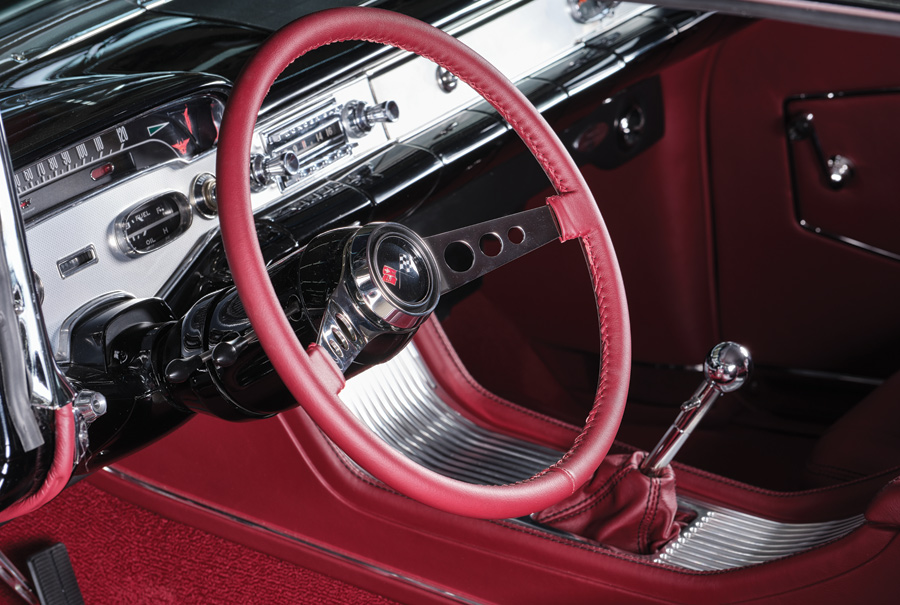
In 1958 the standard perimeter-type frame of the day was abandoned and replaced by a pair of ’rails that were laid out with an elongated “X” in the middle. According to Chevrolet the frame produced increased torsional rigidity and allowed proper positioning of the passengers within. Additionally, a coil spring suspension replaced the previous year’s rear leaf spring setup and there was even an optional air-ride system. But that was then and this is now.
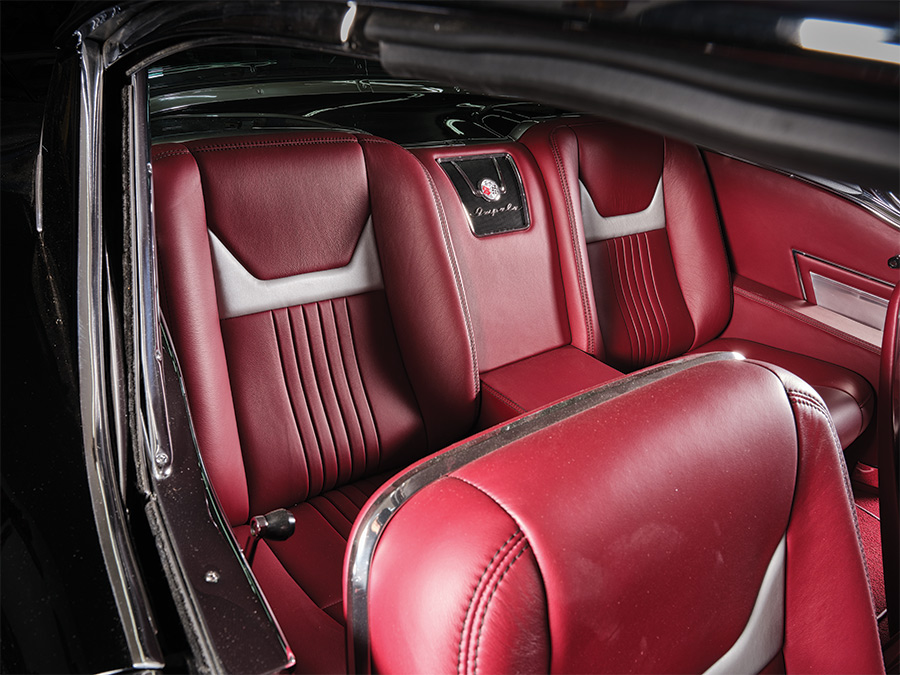
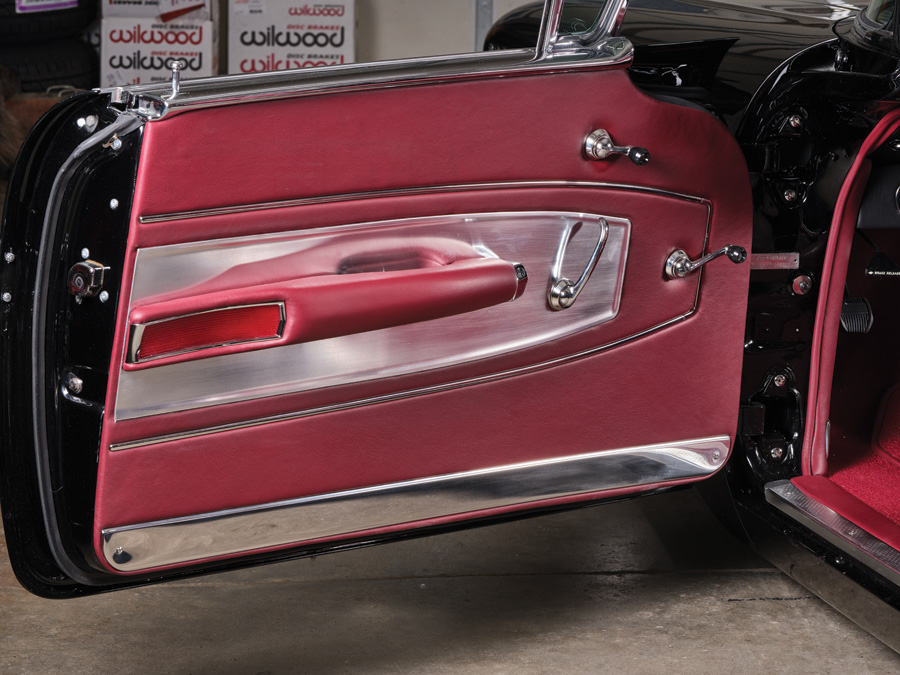
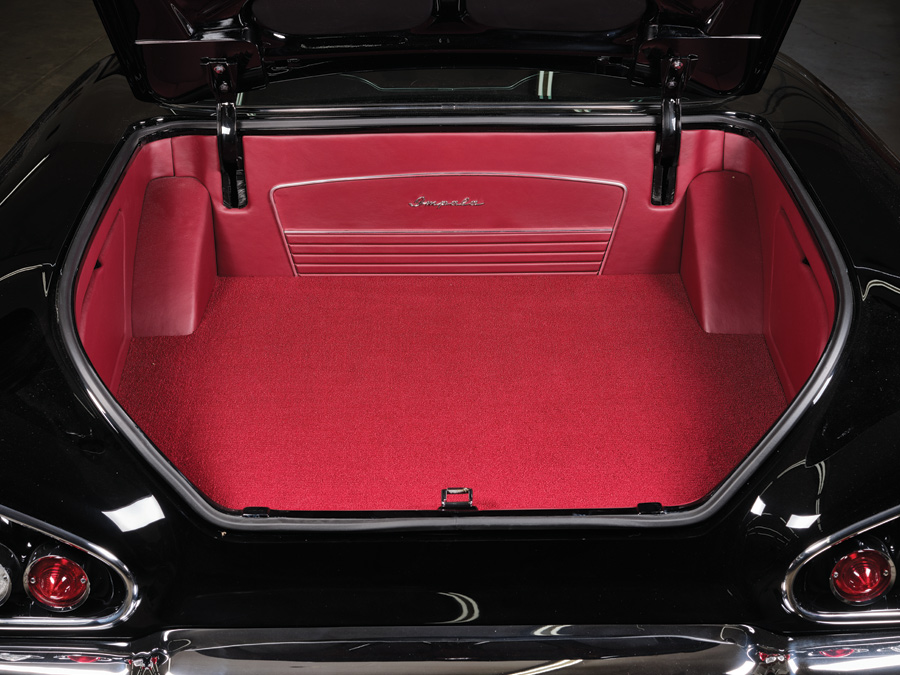

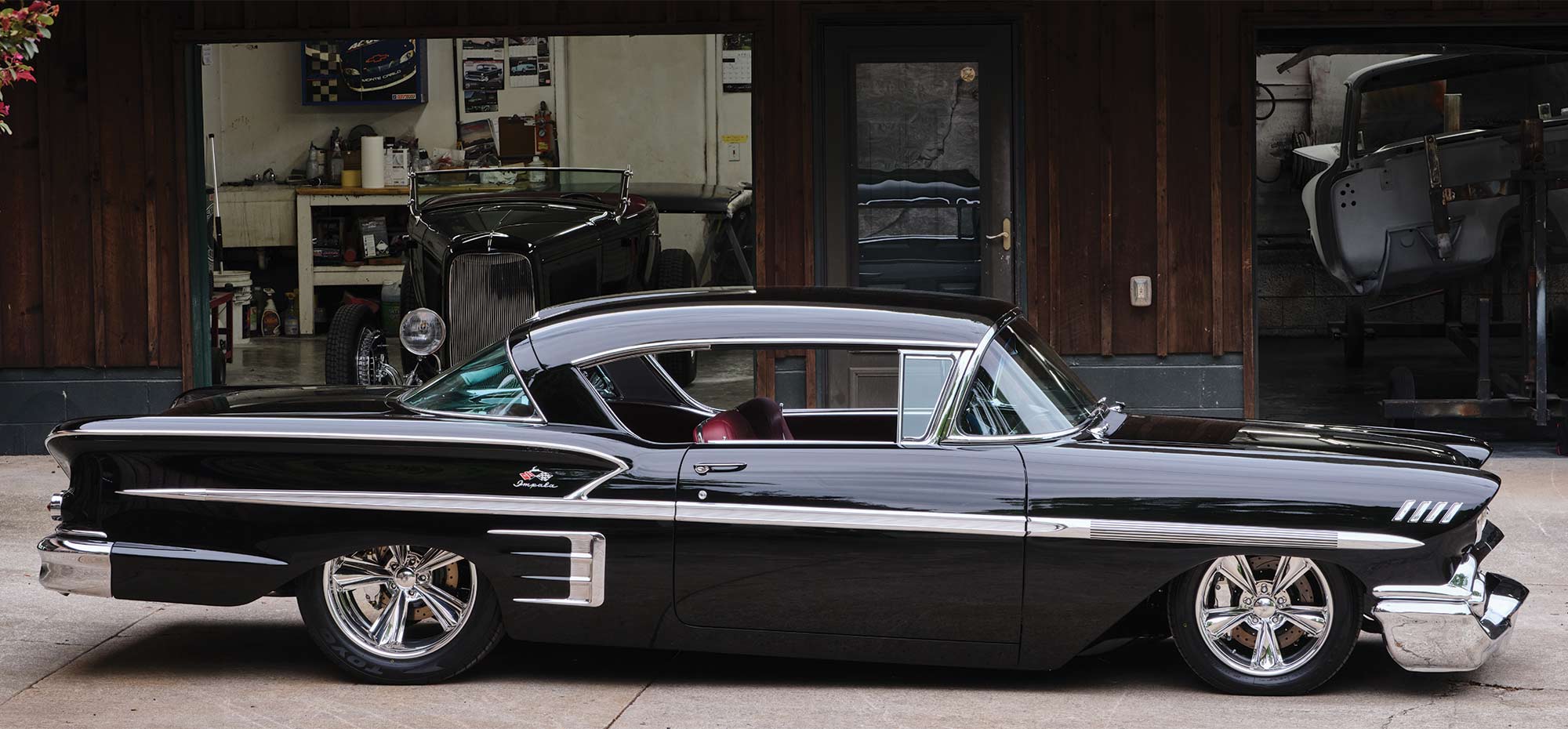
Located around the chassis you will find a full complement of Wilwood components that include their 2-inch drop Pro Spindles fitted with six-piston calipers and 13-inch rotors as well as a Wilwood master cylinder all operated by the factory pedal assembly. To this there are Strange aluminum single-adjustable coilover shocks with 650-pound coilover springs in front and 600-pound coilover springs in the rear. The forward sway bar measures 1-1/8 inches along with the rear Panhard bar as both are AME items. Steering also comes from AME through the use of a Detroit Speed 20:1 power rack-and-pinion steering twisted into use by an ididit column topped with a Lecarra wheel.
There’s a lot of chassis so you would expect a lot of engine. You would be correct. Back in the day the 1958 Chevy Impala came standard with a 283 V-8 rated at 185 hp or optional 230 hp. There was another option, and a rare one indeed, in the Rochester Ramjet fuel injection that was rated at 250 hp. But the pièce de résistance was the 348 (W-motor) motor with a single four-barrel producing 250 hp or with the hot rodder’s dream of three two-barrel carbs rated at 280 hp. (These W-motors, the 348 and later the 409, were called a “big-block” but technically they weren’t as they were not built on the same architecture that would later be used on the 396-427-454 big-blocks to come later.)
As you stare longingly at the 1958 Chevy Impala you can’t help but wonder what, if any, sheetmetal modifications have occurred. It’s pretty much all stock with the usual cut and tuck of both bumpers. Exterior trim and chrome (such as those massive front and rear bumpers) are stock but they have undergone refreshening at the hands of Dan’s Polishing who handled all of the stainless and chrome work on this Impala. Under the skin you will find big, really big, rear wheeltubs that also makes it possible for the large rubber/wheel combo to fit within the confines of the body. The body itself is painted in (what else?) PPG 9700 Deltron Alloway black, which is a traditional basecoat followed by a clearcoat paint. Of course, all of the body- and paintwork was handled in-house at AHRS.

We’ve come a long way since and while this 1958 Chevy Impala showcases the best of decades past, it will “hang” with the best of today.